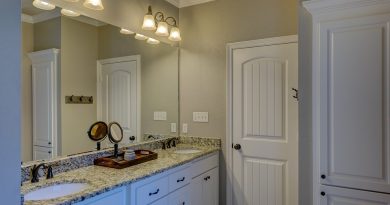How to Successfully Flip Real Estate with Foreclosure Properties
Flipping real estate with foreclosure properties can be a great way to make a profit in the real estate market. However, it requires a strategic approach and careful planning in order to be successful. In this article, I will provide you with a comprehensive guide on how to successfully flip real estate with foreclosure properties.
Understanding Foreclosure Properties
Before diving into the process of flipping foreclosure properties, it’s important to have a good understanding of what foreclosure properties are. Foreclosure properties are homes that have been repossessed by the lender due to the homeowner’s failure to make mortgage payments. These properties are typically sold at a discounted price in order to recoup the lender’s losses.
Benefits of Flipping Foreclosure Properties
Flipping foreclosure properties can be a lucrative venture for real estate investors. Some of the benefits of flipping foreclosure properties include:
1. Low Purchase Price: Foreclosure properties are usually sold at a discounted price, which means you can acquire the property for a fraction of its market value.
2. High Profit Potential: By renovating and improving a foreclosure property, you can increase its value and sell it for a higher price, resulting in a profit.
3. Quick Turnaround: Flipping foreclosure properties allows you to quickly buy, renovate, and sell the property, enabling you to make a profit in a short period of time.
Steps to Successfully Flip Real Estate with Foreclosure Properties
Flipping foreclosure properties requires a careful and strategic approach in order to be successful. Here are the steps you should follow to successfully flip real estate with foreclosure properties:
1. Conduct Market Research
Before purchasing a foreclosure property, it’s important to conduct market research to ensure that the property is located in a desirable area with high resale value. Look into the local housing market trends, property values, and neighborhood demographics to determine the potential for profit.
2. Assess the Property’s Condition
When purchasing a foreclosure property, it’s essential to thoroughly assess the property’s condition. Hire a professional inspector to conduct a thorough inspection of the property, including the foundation, roof, plumbing, electrical systems, and overall structural integrity. This will help you identify any potential issues that may affect the property’s value.
3. Develop a Renovation Plan
Once you have assessed the property’s condition, develop a renovation plan that outlines the improvements you plan to make to the property. This may include cosmetic upgrades such as painting, flooring, and landscaping, as well as structural improvements to address any issues identified during the inspection.
4. Determine Your Budget
Before beginning the renovation process, determine your budget for the project. Factor in the purchase price of the property, renovation costs, holding costs (such as property taxes, insurance, and utilities), and potential selling costs (such as real estate agent fees and closing costs). Make sure to leave room for unexpected expenses that may arise during the renovation process.
5. Renovate the Property
Once you have developed a renovation plan and determined your budget, it’s time to renovate the property. Work with contractors and tradespeople to complete the renovations in a timely and cost-effective manner. Keep a close eye on the progress of the renovation to ensure that the project stays on track and within budget.
6. Market the Property
Once the renovation is complete, it’s time to market the property to potential buyers. Work with a real estate agent to list the property on the market and showcase its features and improvements. Consider hosting open houses and staging the property to attract potential buyers and secure a quick sale.
7. Sell the Property
Finally, once you have found a buyer for the property, it’s time to close the sale and collect your profit. Work with a real estate attorney to ensure that the sale is conducted smoothly and all legal requirements are met. Once the sale is finalized, you can celebrate your successful flip and move on to your next real estate investment.
In conclusion, flipping real estate with foreclosure properties can be a profitable venture for real estate investors. By following these steps and taking a strategic approach, you can successfully flip foreclosure properties and make a profit in the real estate market. Remember to conduct thorough research, assess the property’s condition, develop a renovation plan, determine your budget, renovate the property, market the property, and sell the property in order to achieve success in flipping foreclosure properties.






